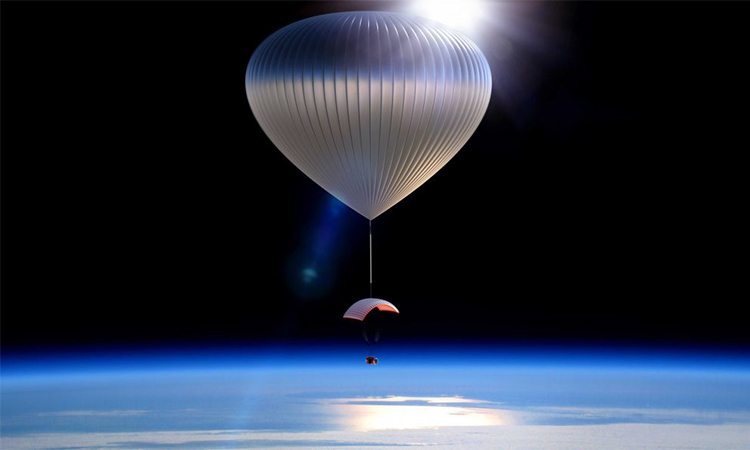The Tucson-based aerospace company that hopes to unlock a whole new economy in the stratosphere successfully completed a five-day mission with its stratospheric satellite, Stratollite.
World View’s Stratollite spent five days in flight, marking another milestone for World View, which launched the Stratollite from Spaceport Tucson on Oct. 1.

“This is our first successful attempt at testing all of the Stratollite’s integrated critical systems over the course of multiple days, and we are thrilled with how everything worked,” said Jane Poynter, World View founder and CEO. “This is an enormous leap in our development program and we are certain the Stratollite is going to forge a new path in how we observe, react to and collect data about our planet.”
World View bills Stratollite as the first-ever stratospheric payload vehicle that can spend multiple days in the sky for a variety of uses. This recent test was another major demonstration of the Startollite’s long-duration capabilities.
During this recent test, the Stratollite launched from Southern Arizona, eventually landing near the Grand Canyon, 260 miles Northwest of Tucson, said Andrew Antonio, Word View’s director of marketing, in an announcement.
Throughout the mission, the Stratollite was able to navigate through the sky, keep an altitude between 55,000 and 75,000 feet and maintain power from its solar panels through a day/night cycle.
World View was also able to test its internally developed high-bandwidth data transfer system on the craft during this recent flight. The data transfer system is critical to allowing Stratollite to provide real-time data and analysis for its future commercial users.
The Stratollite carried several things in its payload during this recent test flight, including a Canon camera to show off the Stratollite’s observation prowess, and a communications payload for the U.S. Southern Command.
Currently, the U.S. Souther Command is looking into the Stratollite’s ability to help with efforts against human and drug trafficking and maritime piracy in sparsely populated areas.
Antonio equates Stratollite to a platform, where there are myriads of potential uses. The biggest and most obvious use for this technology would be to observe assets for prolonged periods of time. Farmers could have a Stratollite above their fields analyzing crops, city planners can view traffic and first responders can set up communications networks with the platform.
In September, Stratollite reached the 27-hour test flight milestone, which was the first flight the craft had that lasted a full day/night cycle. The World View team plans to continually increase the amount of time Stratollite can fly in a single launch.
World View grabbed headlines this summer after it launched a chicken sandwich into the stratosphere with Stratollite.
The Tucson-based company also has a space tourism division, which hopes to send eager travelers into the stratosphere in a similar fashion to how the Stratollite sends its payloads into the sky.




